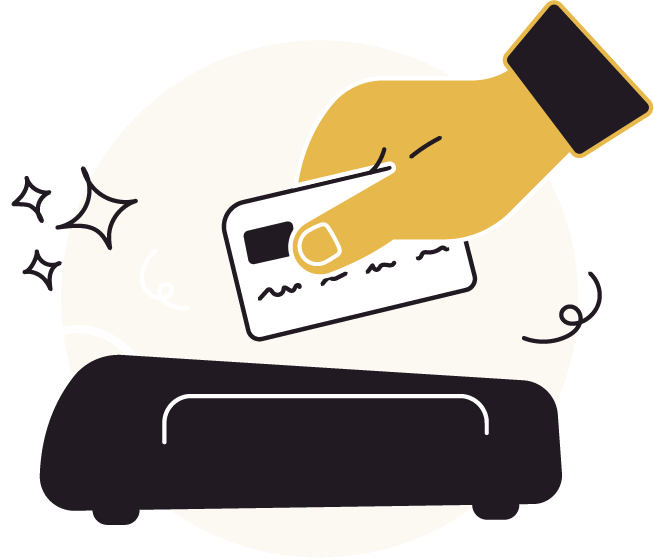Restaurant Financing Guide
Merchant Cash Advances
VS inKind Financing
One of the fastest-growing sources for funding a restaurant is the Merchant Cash Advance (MCA). Many companies offer this service to businesses seeking an infusion of capital. Approximately $20 billion of MCA funding was provided to domestic businesses in 2022 with the market growing at approximately 15% per year.
While a merchant cash advance is easily obtained from a variety of financial companies, it is very expensive and requires paybacks from every credit card transaction in your restaurants. This makes it a risky option for restaurant operators looking to secure crucial financing.
Read on to learn more about Merchant Cash Advances and why restaurant operators should be weary of accepting this type of funding.
Read on to learn more about Merchant Cash Advances and why restaurant operators should be weary of accepting this type of funding.
In this guide
How do Merchant Cash Advances Work?
In exchange for cash "up front," the restaurant operator agrees to pay a percentage of credit card transactions until the loan is paid back, with fees. The loan ends when the principal and the fees are paid back. The typical length of a merchant cash advance ranges between three months to one year.
Merchant cash advances can be ordered directly from a finance company (typically not a bank) or from an independent sales agent who works for a finance company. Most commonly, they are offered by a restaurant's point of sale company like Toast or Square.
Merchant cash advances can be ordered directly from a finance company (typically not a bank) or from an independent sales agent who works for a finance company. Most commonly, they are offered by a restaurant's point of sale company like Toast or Square.
MCAs Cost More Than Other Financing Sources
A key feature of Merchant Cash Advances is that, rather than having a traditional interest rate, borrows instead repay a multiple of the amount borrowed. This is known as the "factor rate" and it can be 1.15 - 1.6 times amount borrowed.
For example: if an owner receives $100,000 and is offered a factor rate of 1.2, the payback amount is $120,000. Additionally, payments are usually taken daily, consisting of a set percentage of operator's credit card transactions.
This process works like this. Say you make a total of $1,000 in daily credit card transactions, with a 10% rate, you'll be paying $100 that day towards the total payback amount.
While this infusion of liquidity can be a relief to an owner, the costs to this form of financing are significant based on how quickly the funds are repaid. Ultimately, this form of repayment can quickly straddle restaurant operators who might lack the strong positive cash flow necessary to immediately make repayments while supporting day-to-day operations.
For example: if an owner receives $100,000 and is offered a factor rate of 1.2, the payback amount is $120,000. Additionally, payments are usually taken daily, consisting of a set percentage of operator's credit card transactions.
This process works like this. Say you make a total of $1,000 in daily credit card transactions, with a 10% rate, you'll be paying $100 that day towards the total payback amount.
While this infusion of liquidity can be a relief to an owner, the costs to this form of financing are significant based on how quickly the funds are repaid. Ultimately, this form of repayment can quickly straddle restaurant operators who might lack the strong positive cash flow necessary to immediately make repayments while supporting day-to-day operations.
Advantages and Disadvantages to MCAs
Unless you have no other options, taking an MCA is probably a bad idea. Restaurants that need cash to cover payroll, expenses, or vendors are targeted by predatory MCA lenders who offer "quick cash" in exchange for 8-14% of credit card sales.
The problem is that if you don't have the money to pay your bills this month, then how are you going to next month when 10% of your sales are going to the MCA? Restaurants borrow and end up being forced to close because they can't pay their bills.
The problem is that if you don't have the money to pay your bills this month, then how are you going to next month when 10% of your sales are going to the MCA? Restaurants borrow and end up being forced to close because they can't pay their bills.
Advantages to MCAs
- Quick approval
- Easy to obtain
- Flexibility in use of funds
Disadvantages to MCAs
- Very expensive
- Lack of regulation
- Frequent payments
- Hurts cash flow
However, merchant cash advances do have some advantages. Unlike other forms of loans or financing, merchant cash advances are easier to obtain, usually have a quick approval process, and allow more flexibility in how you use the funds.
inKind Capital as a Better Alternative to Restaurant Financing
Unlike Merchant Cash Advances, inKind financing offers a sustainable and profit-focused solution for restaurant operators. Our process works like this: inKind purchases a large amount of food and beverage credit from a restaurant then sells that credit back to consumers on the inKind App. This process allows us to provide restaurant operators with a lump-sum payment that's nonrestrictive, never accrues interest, and does not require operators to give up any ownership in their business.
Our funding model was created by operators, for operators. We know how hard the restaurant industry can be and work with operators to provide a solution focused on driving new, loyal, high-spending guests through their door. By providing an affordable source of capital, we're helping restaurant operators retain profits and build a long-term, sustainable business model.
Our funding model was created by operators, for operators. We know how hard the restaurant industry can be and work with operators to provide a solution focused on driving new, loyal, high-spending guests through their door. By providing an affordable source of capital, we're helping restaurant operators retain profits and build a long-term, sustainable business model.
How The inKind Financing Model Works

Purchase Credit
inKind provides funding by purchasing food & beverage credit to your restaurant.

Selling Credit
inKind sells the F&B credit to guests on the inKind app. Guests receive a bonus to spend more.

Sending Guests
inKind sends guests to your restaurant. Guests who use inKind visit more often and spend more per visit.
Challenges Restaurants Encounter with Restaurant Loans
Restaurants face unique challenges when trying to obtain loans. Compared to other businesses, restaurants have to contend with their status of being a higher-risk investments, seasonal cash flows, and thin profit margins.
Bottom Line
Unless you have no other options, taking an MCA is probably a bad idea. Restaurants that need cash to cover payroll, expenses, or vendors are targeted by predatory MCA lenders who offer "quick cash" in exchange for 8-14% of credit card sales.
A great alternative is inKind Capital financing. With our financing model restaurant operators receive a lump sum of funding focused on driving loyal high-spending guests through their doors. Our financing solution allows operators to maintain ownership over their restaurants, incur no debt on their initial funding, and achieve sustainable profitability without the traditional risks associated with MCAs.
A great alternative is inKind Capital financing. With our financing model restaurant operators receive a lump sum of funding focused on driving loyal high-spending guests through their doors. Our financing solution allows operators to maintain ownership over their restaurants, incur no debt on their initial funding, and achieve sustainable profitability without the traditional risks associated with MCAs.
Get in touch
How can inKind take your restaurant(s) to the next level? Let's chat.
Ready to learn more?


